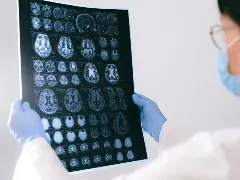

Aging is inevitable, but a decline in our physical and mental health doesn’t have to be. We have seen that while lifespan, the amount of time you are expected to live, continues to increase; healthspan, the period of life spent in good health, free from the chronic diseases and disabilities of aging, isn’t keeping up. The good news is that even lifestyle changes, at any age, can help bridge the gap between lifespan and healthspan leading to a longer, healthier life.
Previous research has shown physical activity can reduce feelings of depression and anxiety, in addition to many other benefits for healthy aging overall. Unfortunately, since the beginning of the COVID-19 pandemic in 2020, older Americans have become less physically active.
In a recent survey paneling older adults ages 50+ on their overall health, attitudes, behaviors, and experiences with aging, for insights on the relationship between exercise, health and aging, it was found that:
- Exercise motivations and habits shift after 65
- Amongst respondents 50-64 ‘weight loss’ was the most common reason for exercise, but for respondents 65 and older, ‘mobility and balance’ and ‘heart health’ were more common.
- Respondents 76-85+ report exercising every day more frequently than those ages 50-75.
- Exercise linked to improved overall health
- Those who exercise 5 or more times a week were more likely to describe their mental health and physical health as very good.
- Those who exercise 3 or more times a week report mental health being a motivation for why they exercise, while those who exercise less were less likely to list mental health as a reason.
- Bridging the gap between health education and action
- Respondents know exercise will help them age better, but this isn't always put into practice.
- Those who exercise regularly report being more motivated to take actions to age better than those who exercise less.
The common thread underscored within the data proves that steps can be taken at any stage of life for us to age better physically and mentally. It comes down to each of us making conscious adjustments in our life that will exude the real results we desire.
Three small, actionable steps towards big change
There is plenty of research out there that shows the numerous health benefits associated with starting a routine. With that, establishing a routine to incorporate healthier practices throughout your day can be a lot more enjoyable than people might think, but starting a new routine for the first time, at any age, can feel overwhelming and challenging. Here are three small steps you can take today to help achieve your health and wellness goals that are attainable - and actually fun!
1. Focus on what feels good
Find the type of movement you enjoy and you might change your whole relationship with exercise. Being active doesn’t have to mean spending hours in a gym each week. Explore a variety of activities, such as yoga, Tai Chi, dancing, walking, or biking. Think about movement as something that you look forward to, not a stressful obligation. Start by trying one new activity this week and see how you feel afterwards. Sit with it, and think about how your body and mind react before, during, and after. How is your physicality for the rest of the day? How is your mood affected? Take time to assess and adjust your routine accordingly.
2. Set a Date, Time, and Place within the next 7 Days
Committing to a specific day to start is a great first step towards a long-term, healthier lifestyle. You can take it a step further and decide on a time and place within your schedule, even if it’s just taking a 10-minute walk or doing 5 minutes of breathing.
Find what works best for you to remember and follow through. Whether it’s a calendar reminder, or even a Post-It note you keep on your nightstand with your commitment to yourself and your health, find small, tangible ways to keep yourself on track and stay motivated in your goals that make you look forward to moving your body.
3. Find Experts to Help
Not sure where to start? There are many resources to help show you how to build new habits and live a healthier lifestyle. Companies, like Bold, can help you to personalize an exercise routine that meets you where you are and encourages you along the way. Don’t be afraid to ask for help - there are people out there that are happy to work with you on your mental and physical health journey.
You know your body better than anyone. Listen to it, and see how these strides not only impact your physical health but mental as well. Aging boldly is achievable with a plethora of resources - use them.
About the Author:
Amanda Rees is the CEO and cofounder of Bold. Bold's digital platform uses personalized, science-backed programs to address the most fundamental health and wellbeing challenges faced by older adults. Bold leverages research and clinical interventions to prevent falls, reduce arthritis related disability, and increase activity levels for older adults. Bold partners with health plans and providers to improve outcomes and reduce care costs.
Prior to co-founding Bold, Amanda managed strategic grantmaking for the renewable energy and transportation portfolio at The 11th Hour Project, a program of the Schmidt Family Foundation. She was also a researcher at Stanford, Princeton and UCLA. Amanda has been a fitness instructor for over a decade, teaching dance, yoga, indoor cycling, and tai chi. She holds a BSE in chemical & biological engineering from Princeton University.








Comments
Post a Comment